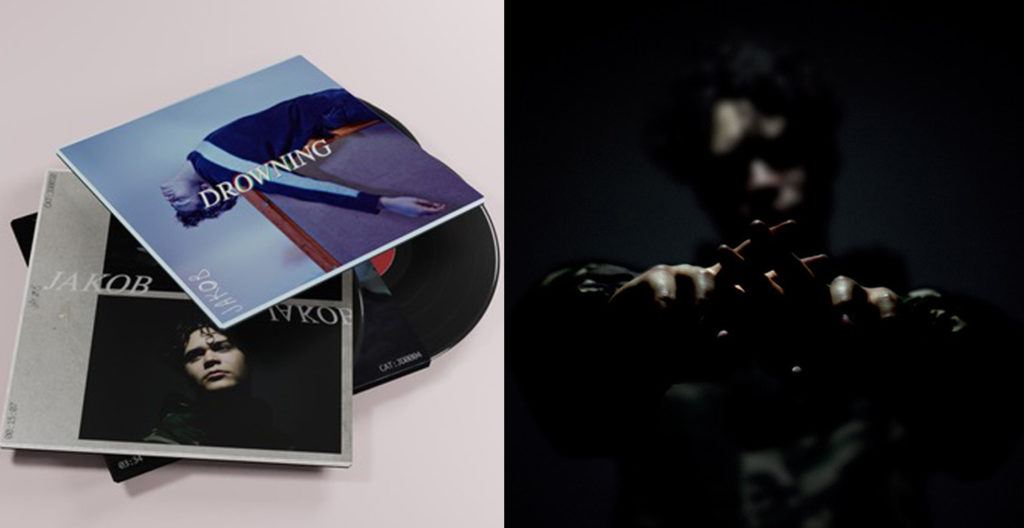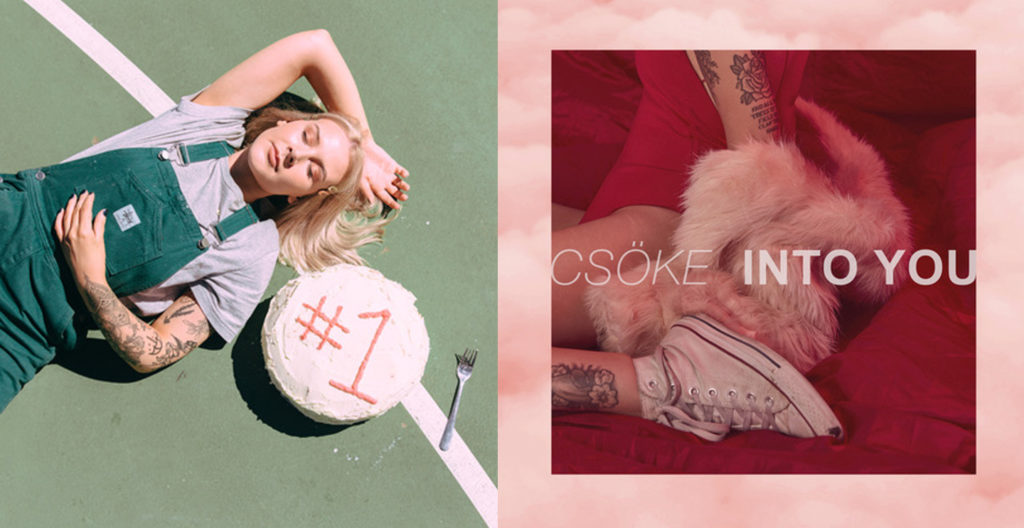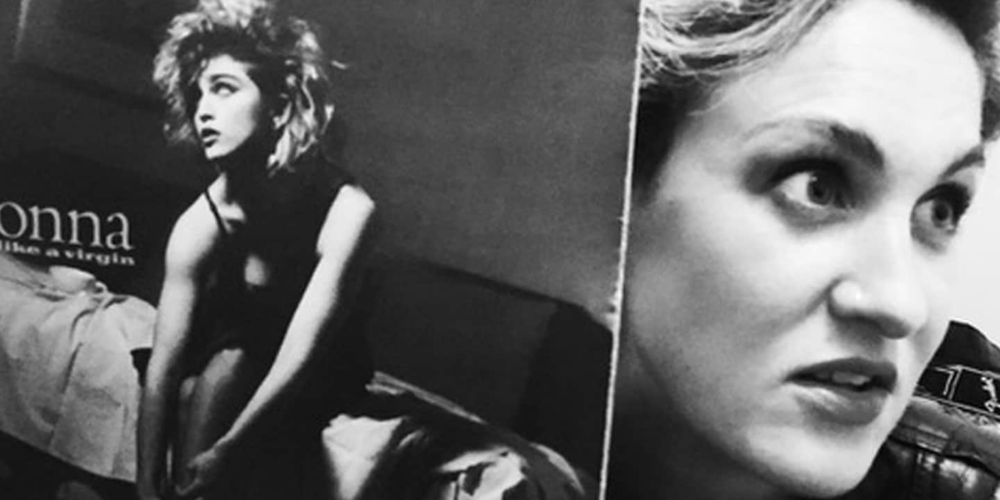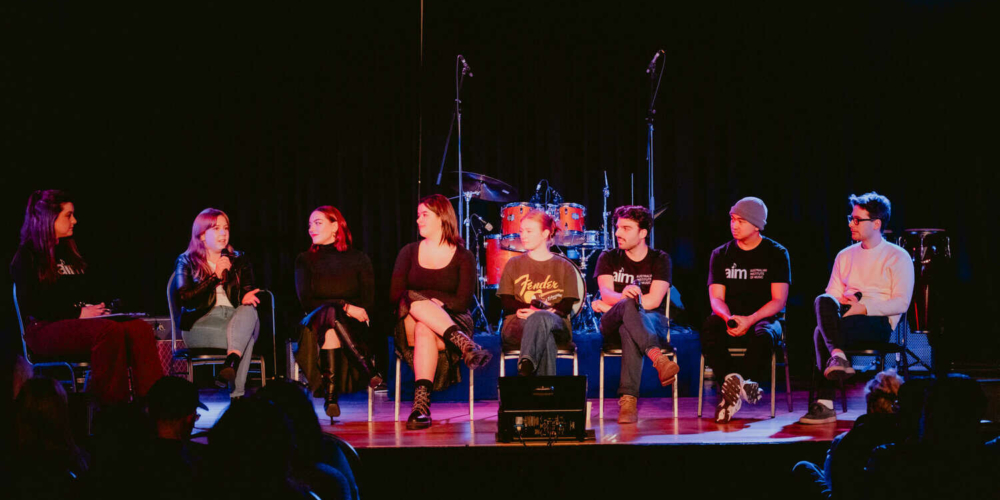Susie Garrard is a creative producer based in the UK who graduated from AIM’s Bachelor of Arts Management whilst carving out a fascinating career developing cutting-edge ideas to enhance the image and personal brands of a slew of artists. She shares her story and provides some priceless advice for aspiring creative producers keen to make an impact and break into a wildly competitive business. Check out more of Susie’s work at sirencreativestudio.com.
Falling In Love With Creative Production & Working with Artists
Before Susie’s relocation to Australia, she worked in her native England as a producer. She started doing music supervision for the brand’s music videos. “I started doing the sync work and taught myself about copyright, IP, etc. That became a broader music marketing piece for the brand because it was a core pillar of what we were doing,” she explains. “So I started working with artists more collaboratively.”
Susie’s approach to working with these emerging artists was original. “Rather than doing your straight up, ‘You give me a track, I give you money,’ if they didn’t have decent recordings, I set them up with a recording session to do their EP or single, or did their music video,” she says. “We had access to the tracks, we made content, they got what they needed, and it got a bit deeper, which was good.”

The AIM Experience & the Move to Australia
Susie came to Australia as a mature student to study the Bachelor of Arts Management course at AIM, after spending more than seven years producing campaigns, photo shoots and video shoots in the UK. Susie segued into the music business from her initial career in fashion due to a personal interest. “I played in a lot of shitty bands growing up,” she laughs.
“I genuinely loved my time at AIM,” Susie says. “I put in a lot and I got a lot out of it.” The key things Susie learned are how fast moving the industry is. “[The course] is a really good foundation, but you do need to keep up with it.” Networking and internships are also crucial. “I’m 100% on board that no one should be doing a heap of unpaid work. But equally, well- managed short-term, even day internships, like assisting in events, are how I’ve met everyone [I’ve worked with].”
Susie’s time at AIM coincided with shifting full-time into the music industry, where she worked in a number of roles during and post-study in Australia, from music journalism for Happy Magazine through to role in the brand partnerships team at Rice Is Nice.
Creating Bands, Brands & An Image That Cuts Through
However, it was meeting Paul Paoliello (now of Haiku Entertainment) that really sparked her interest and cemented her love for the creative side of emerging artist image development and brand development. “Paul was the first person who said, ‘Hey, all those skills that you had in the fashion industry, we need those in the music industry,’” she says.
Beyond more obscure fledgling artists, Susie and the team took on a lot of previous talent that broke through on The Voice and X Factor. “We had an Australian artist called Jacob Delgado, who had competed on X Factor when he was 14 years old,” Susie explains. “Relaunching him as a solo artist was a really interesting premise where you’ve got this existing audience for someone, [especially] when they’re fairly immature, as an artist,” she adds. “We needed to work out who’s coming with us, and where the new audiences are … that was a really interesting project to work on – we partnered with Believe Australia on it,” she continues. “It was quite a wide-ranging campaign that we put together, whereas when working with a new artist, you’re working a little bit more on the fly.”

The first step to this process is assessing how strong each artist is in this area, which might sound cutthroat. “It’s basically asking, ‘Do you know what you’re doing? If not, we’re gonna tell you what you’re doing,’ in a sensitive way of course,” she adds. “I used to run the initial workshops with the artists. You essentially run a therapy session to work out what they’re about, which is quite fun.”
Creative Producers: Know Your Music History
“If you want to do artist development and marketing, learn as much as you can about visual design, creativity and the semiotics [signs and symbology] of it,” Susie says. “Know your music, know your music history,” she adds. “Know where everything came from and what it looked like, because you’re never going to get away from that.”
“One campaign that killed was Five Seconds of Summer,” she muses. “It was when they flipped up from being a hoodie-wearing boy band – they did photoshoots backed with foil – an Andy Warhol move. They had these press shots of Luke in the same pose and outfit as Jim Morrison. And it’s not that their audience knows that. But subconsciously, somewhere in there [it clicks]. There’s this translation piece that happens when you’re placing people. And if you know that, and you can get your cultural referencing down, that will really give you an edge.”

The Formula: Can The Billie Eilish Model Be Replicated?
“I think we have a tendency in the music industry to want there to be a formula,” she says. Whilst attending a conference featuring Billie Eilish’s management, Susie could see everyone desperate to replicate the magic approach that made her a star. “You can’t do it. You can take elements, but what worked with one artist, won’t necessarily work with the next one. That’s because of that human element,” she continues.
Oversharing, Burnout & Personal Brands That Can Survive
Shooting for sustainability plays a large role in how you tackle building each artist. Anyone can have a bright moment in time, but how do you create longevity? How do you ensure they can live past their shooting star apex and maintain their mental health?
“In an artist’s sense, if they’re running this persona, can they do it? Is it going to protect them?” she asks. “I’ve had a few artists where it’s like, ‘You need this because it’s protecting you because you need to keep yourself separate.’ And others where they need to put their whole heart and soul into this. But can we do it so that you don’t completely burn out? And you don’t get laid bare for the world to completely kill you and become exhausted? That’s a bit of a learning curve.”
The Future of Music & Technology
The world’s fierce fascination with the marriage of music and tech provides vast opportunities for artists to get really creative. “Homeshake (a US band) created an album, and took a proprietary API to match up with a weather forecasting app,” Susie explains. “Wherever you were in the world, this app would look at what the weather was doing and then feed you an album track to match – this became the soundtrack for that day.”
Music Declares Emergency: Social Media & Content Manager
Susie’s most recent project was developing the social content for Music Declares Emergency, a UK-based advocacy group focused on climate change and its impact. “It was founded by the drummer from [UK punk band] Savages. It was a really good project for me, because that sustainability piece is close to my heart,” she says.
Personal Qualities Of Great Creative Producers to Cultivate
Be adaptable.
“You are always going to have to collaborate with people, and you’re not always going to get your way. And you’ve got to make it work. Don’t get too attached to your own ideas. Self confidence is definitely important – I haven’t had a single job where you don’t have to stand up and justify your ideas.”
Cultivate your project management skills.
“There’s a lot of really talented creative people out there. There’s less people that can do project management, budgets and timelines, and manage creative teams. But you are going to need to do that. I’ve heard other people in my industry say how hard it is to find someone that can pull together a shoot, or pull together a project, who can actually underpin that and keep that rolling and manage that.”
Have a plan but expect it to change.
“Have a plan, but don’t have a concrete plan. I studied fashion design, I thought I was going to be a fashion designer. Within six months, I was doing something completely different. If you roll with it, if you want to do it and it feels right, [do it] but I don’t think you can ever plan it completely.”




